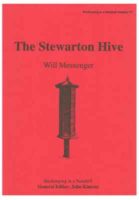This is a PDF Downloadable File:
No. 77 in the Beekeeping in a Nutshell series.
Although little known today, the Stewarton Hive has played a significant part in the development of modem beekeeping. Introduced in Ayrshire in 1819, it was still in regular use at least as late as the 1950s. The most notable feature was the octagonal construction while grooved top bars and sliders provided an alternative to crown boards and allowed a quite different method of manipulation. Standard designs almost always incorporated glazed windows that were not just for casual observation but formed part of this ‘Stewarton System’.
The Stewarton was not the only octagdnal hive and can be viewed as a direct descendent of the earliest recorded rational wooden hives in Britain. It is usually reckoned to be the first ‘storifying’ or supering hive, and so is the forerunner of ahnost all modem hives. Furthermore, there is evidence that Stewartons were fitted with moveable frames and had correct bee spaces long before Langstroth secured his patent. Possibly as a result of the claims for the hive of low swarming, ease of manipulation, and bumper honey crops, interest in the design has been revived from time to time. There have been various attempts to build and operate replicas. Sadly, not everything that has been written about the Stewarton hive is accurate and some of these projects have, at best, perpetuated the errors. Last, but not least, the octagonal Stewarton, adorned with handles, buttons, turnbuckles and sliding shutters, all surmounted by an octagonal pyramid roof topped out with a nicely turned finial, is more attractive than nearly all other hives.



